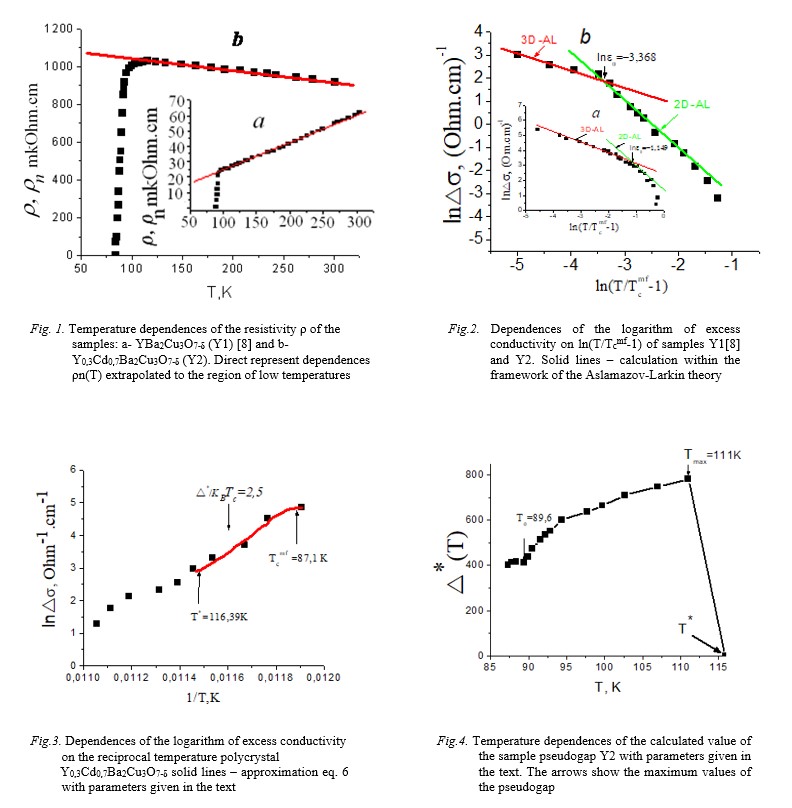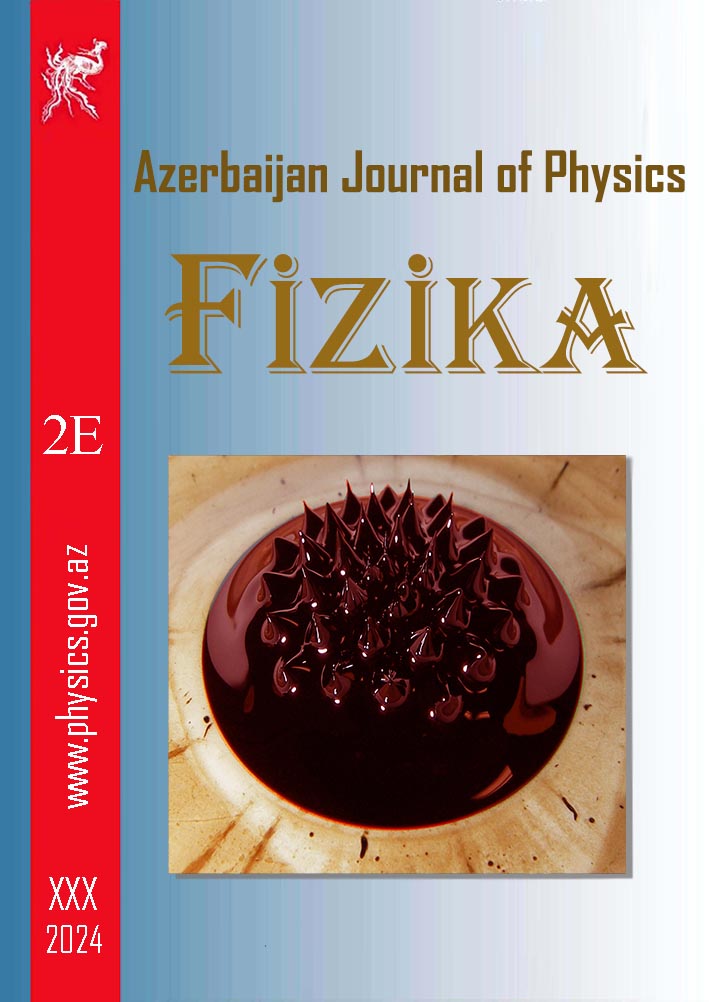ABSTRACT
A study was made of the influence of substitution of up to 50% of yttrium for cadmium in YBa2Cu3O7-δ polycrystals on the mechanism of
formation of excess conductivity. It has been established that such a substitution led to a significant increase in the resistivity of
Y0,3Cd0,7Ba2Cu3O7-δ and the value of the critical transition temperature Tc to the superconducting state decreases.
The mechanism of formation of fluctuation conductivity (T) near Tc is considered within the framework of the Aslamazov-Larkin theory. The Ginzburg temperature, the critical
temperature in the mean field approximation, and the 3D-2D crossover temperature were determined. In is shown that the doping of YBa2Cu3O7-δ
with cadmium leads to the coherence length along the c axis by a factor of 1,96. An analysis of the excess conductivity of the
Y0,3Cd0,7Ba2Cu3O7-δ sample within the framework of the local pair model made it possible to determine the temperature
dependences of the pseudogap and its maximum value.
Keywords: superconductivity, pseudogap, excess conductivity, coherence length, composition.
PACS: 74.25. Fy, 74.20.Mn, 74.72. ± h, 74.25. ± q, 74.25.Jb
DOI:-
Received: 23.01.2023
AUTHORS & AFFILIATIONS
Institute of Physics Ministry of Science and Education of Azerbaijan, 131, H. Javid Ave.,Baku, AZ 1143,
1. Azerbaijan Medical University, 23, Bakikhanov st., Baku, AZ 1022
2. Institute of NCP Ministry of Science and Education of Azerbaijan, 30 Khojaly ave., Baku, AZ 1025, Azerbaijan
E-mail: v_aliev@bk.ru
Graphics and Images

Fig.1-2-3-4
|
REFERENCIES
[1] E.B. Amitin, K.R. Zhdanov, A.G. Blinov et al. FNT, 31, 4, (2005), 323-326.
[2] M.V. Sadovsky. UFN, 171, (2001), 539 -564.
[3] M.R. Trunin. UFN, 175, 10, (2005), 1017-1037.
[4] A.L. Soloviev, V.M. Dmitriev. FNT, 32, 6, (2006), 753-760.
[5] A.L. Solovjov, M.A. Tkachenko, R.V. Vovk, A. Chroneos. Physica C ,501, (2014), 24–31.
[6] He Rui-Hua., M. Hashimoto, H. Karapetyan et al. Science, 331, (2011), 1579-1583
[7] A.A. Abrikosov. UFN, 174, 11, (2004), 1233-1239.
[8] L.G. Aslamazov and A.L. Larkin. Physics Letters, 26A, 6, (1968), 238-239.
[9] S.A. Aliev, S.S. Ragimov, V.M. Aliev. Fizika, 2004, 10, 4, (2004) 42-43.
[10] V.M. Loktev, V.M. Turkowski. Fizika Nizkikh Temperatur, 30, 3, (2004), 247-260.
[11] S. Hikami, A.I. Larkin. Modern Phys. Lett., v. B2, (1988) 693-697.
[12] B. Oh, K. Char, A.D. Kent, et al. Phys. Rev. B37, 13, (1988) 7861-7864.
[13] A.L. Soloviev, V.M. Dmitriev. FNT, 35, 3, (2009) 227-264.
[14] A.A. Kordyuk. FNT, 41, 5, (2015), 417-444.
[15] D.D. Prokofiev, M.P. Volkov, Yu.A. Boikov. FTT, 45, 7, (2003) 1168- 1176
[16] V.V. Florentiev, A.V. Inyushkin, A.N. Taldenkov et al. Superconductivity: Physics, Chemistry, Technology, 1990, 3, 10, part 2, (1990) 2302-2319.
[17] R. Peters and J. Bauer. Phys. Rev. B 92, 014511 – Published 22 July 2015.
|
